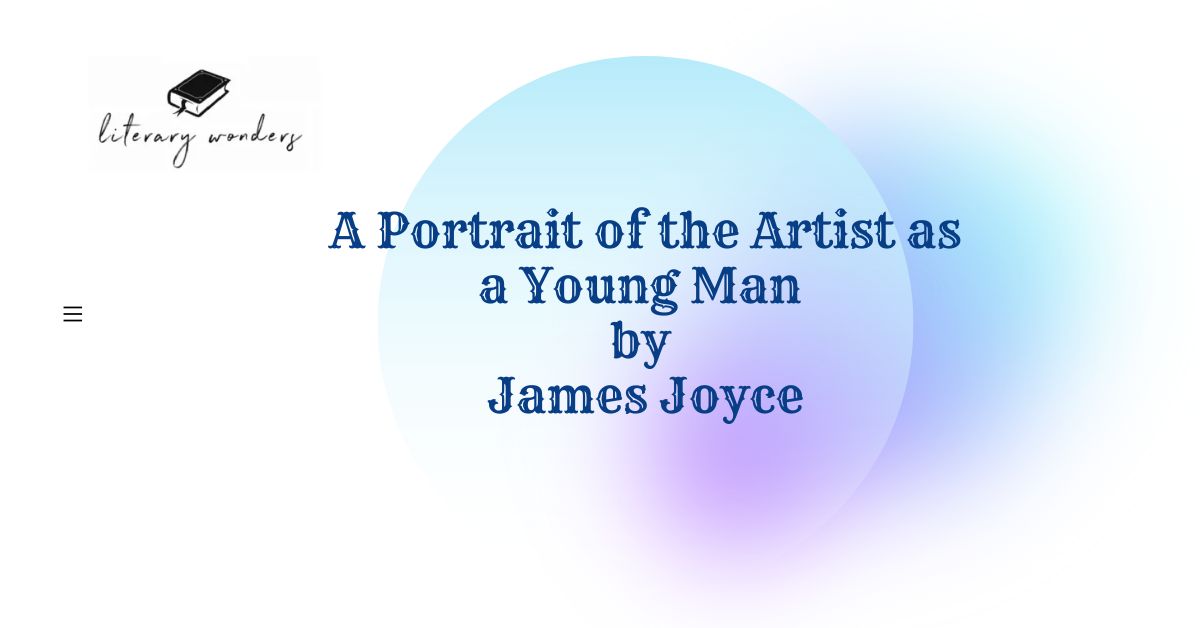Summary of A Portrait of the Artist as a Young Man
A Portrait of the Artist as a Young Man, by James Joyce, is a captivating novel that explores the complex journey of self-discovery and artistic awakening. Published in 1916, it is considered one of the most influential works of modernist literature. It is a semi-autobiographical work that accounts for Joyce’s experiences growing up in Dublin, Ireland.
The novel follows the life of Stephen Dedalus, a young Irishman whose struggles with identity, religion, and societal expectations propel him on a quest for personal freedom and creative expression. Through a series of vivid and introspective episodes, Joyce delves deep into Stephen’s inner world, unraveling the conflicts he faces as he navigates the conflicting forces of family, religion, and nationalism.
Joyce’s distinctive writing style, characterized by intricate prose and stream-of-consciousness narrative, immerses the reader into Stephen’s mind, allowing them to witness his tumultuous thoughts, desires, and internal battles. The novel also addresses larger themes such as art’s nature, language’s power, and the tension between personal and collective identity.
Overall, the novel displays Joyce’s innovative approach to storytelling that helped him create a profound and thought-provoking reading experience. It serves as a profound exploration of the human condition and the universal quest for self-discovery, making it a timeless literary masterpiece that continues to captivate readers to this day.
Stylistic Analysis of A Portrait of the Artist as a Young Man
The novel is renowned for its innovative and poetic writing style, which blends various literary techniques to create a rich and immersive reading experience. Joyce’s mastery of language and poetic elements contribute to the novel’s depth and artistic power.
One prominent aspect of Joyce’s style is his intricate prose, characterized by vivid imagery and descriptive language. He employs lyrical and sensory details to evoke a heightened sense of atmosphere and to delve into the inner workings of the protagonist’s mind. Through the use of precise and evocative language, Joyce paints intricate portraits of people, places, and emotions, creating a tapestry of imagery that captures the reader’s imagination.
Another notable feature of Joyce’s style is his utilization of a stream-of-consciousness narrative. This technique allows the reader to delve into the protagonist, Stephen Dedalus’s thoughts, memories, and perceptions as they flow seamlessly from one moment to another. The stream-of-consciousness style creates a sense of immediacy and intimacy, immersing the reader in Stephen’s subjective experience and providing insight into his complex inner world.
Joyce also incorporates elements of poetry within the prose itself. He employs rhythmic patterns, alliteration, and carefully crafted sentences to create musicality in his writing. This attention to sound and rhythm contributes to the text’s lyrical quality and enhances the narrative’s emotional impact. Additionally, Joyce includes fragments of poems and songs throughout the novel, showcasing his appreciation for and incorporation of traditional poetic forms within the larger narrative structure.
Moreover, Joyce’s symbolism and metaphor add depth and complexity to the novel. He employs recurring motifs and images that carry deeper meanings, inviting readers to interpret and engage with the text on multiple levels. For instance, the symbolic use of religious imagery underscores Stephen’s spiritual journey and the conflicts he faces in reconciling his faith with his artistic ambitions.
Major Themes in the Novel
Identity and Self-Discovery
Joyce delves deeply into the theme of identity as Stephen Dedalus grapples with the complexities of his own sense of self. Stephen undergoes a transformative journey, questioning societal expectations, religious beliefs, and cultural norms, as he seeks to define his own identity as an artist.
Religion and Spirituality
Religion plays a significant role in Stephen’s life, and the novel explores his conflicted relationship with Catholicism. Stephen’s struggle with the oppressive nature of religious institutions and his search for a more personal, authentic spiritual experience reflects Joyce’s critique of religious dogma and the constraints it imposes on individual freedom.
Artistic Expression and Creativity
The novel examines the transformative power of art and the artist’s role in society. Stephen’s artistic awakening represents Joyce’s own exploration of the creative process and the artist’s desire to break free from societal norms to express their unique vision.
Language and Communication
Joyce explores the intricate relationship between language, thought, and identity. The novel experiments with different narrative styles, employing stream-of-consciousness techniques to capture the flow of Stephen’s inner thoughts, dreams, and desires. Through language, Stephen grapples with his own understanding of the world and articulates his artistic vision.
Nationalism and Patriotism
Set against the backdrop of Ireland’s struggle for independence, the novel examines Stephen’s evolving relationship with his Irish heritage and the tension between his personal ambitions and his duty towards his country. Joyce delves into patriotism, national identity, and the conflict between individual aspirations and collective responsibilities.
Sexuality and Desire
Joyce tackles the theme of sexuality with frankness and honesty. Through Stephen’s encounters with romantic and sexual desires, the novel explores the tension between societal expectations and personal fulfillment and the impact of repressed desires on individual identity.
Thus, the novel weaves these themes together, creating a complex and introspective narrative that invites readers to contemplate the nature of selfhood, the power of art, and the struggle to find one’s place in the world. Joyce’s masterful exploration of these themes has established the novel as a seminal work of modernist literature, inspiring generations of readers and writers alike.
Conclusion
In conclusion, “A Portrait of the Artist as a Young Man” exemplifies James Joyce’s distinctive writing style, which incorporates poetic elements such as vivid imagery, stream-of-consciousness narrative, musicality, and symbolism. Through these techniques, Joyce crafts a deeply introspective and emotionally resonant work that continues to captivate readers with its literary artistry.

